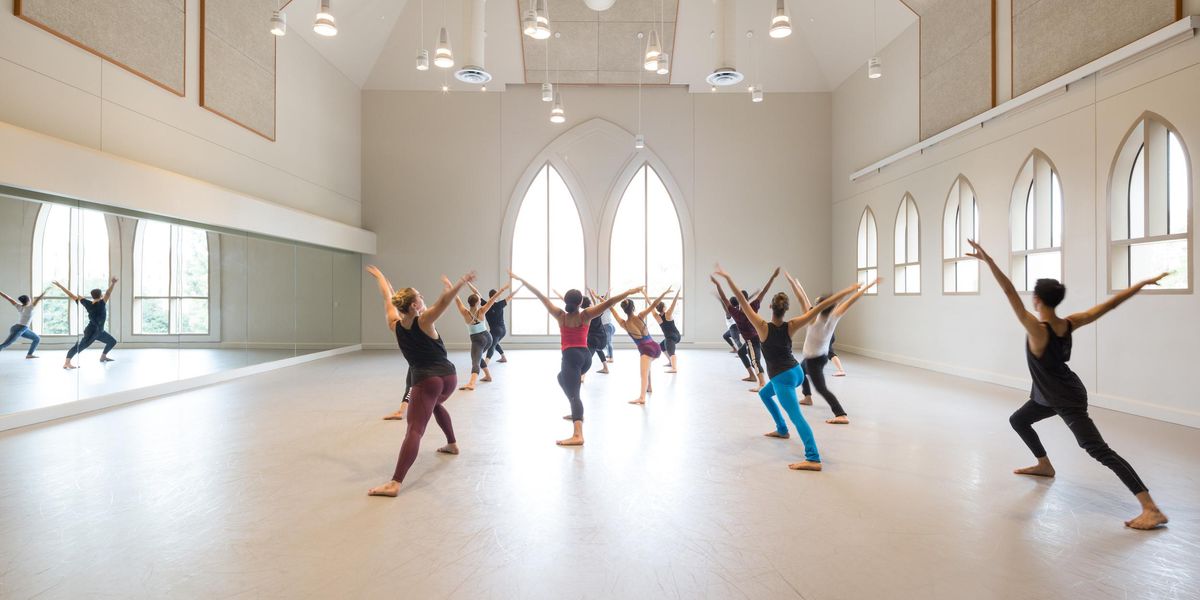On the Rise: Koto Ishihara
In company class, San Francisco Ballet dancer Koto Ishihara seems quiet and meticulous. Her petite frame enveloped in a black down vest on which she’s sewn a monogrammed “K,” Ishihara pliés and tendus neatly. Even when a petit allégro combination presents challenges, the 22-year-old corps member appears composed. But underlying every combination is a fierce tenacity that fuels the confidence she projects onstage.
“I’m very shy in the studio,” Ishihara admits, “but onstage, I feel like I can let that all go.”
At left: Showing command in Balanchine’s
Divertimento No. 15. Photo by Erik Tomasson, Courtesy SFB; choreography © Balanchine Trust.
A native of Nagoya, Japan, Ishihara began ballet at 11. Despite her late start, she credits her early years at the Yukie Ballet School and Shiho Kanazawa Ballet with giving her a strong base. Her Vaganova-style training is evident in the precision with which she utilizes turnout and her high Russian arabesque. Ishihara also possesses a classically proportioned body seemingly made for ballet—long, supple limbs that rise elegantly into effortless extensions, and beautifully arched feet that press against the floor like hands in velvet gloves.
Ishihara was only 15 when she made the decision to come to the U.S. “It’s hard to dance as a career in Japan,” she says pragmatically. “And my dream was to dance in a foreign country.” With typical determination, Ishihara entered the Japan Grand Prix, winning a scholarship to Florida’s Harid Conservatory. After graduating from there in 2008, she entered SFB’s trainee program.
“I first came to San Francisco Ballet for the summer program,” she recalls. “I already knew about the company, but I got more excited the more I watched them rehearse and work. I had never seen a company with so many unique dancers.”
Although Ishihara was offered a corps contract in 2010, she had one more hurdle to surmount. In order to obtain her visa as a performer, she needed to demonstrate a high level of national or international recognition. So she entered Youth America Grand Prix, winning the gold medal in the San Francisco regionals, and then the Tanzolymp International Dance Festival in Berlin, where she earned a silver medal.
It was a worthwhile investment. Now in her third season at SFB, Ishihara’s self-assurance and warmth onstage makes her stand out in roles from contemporary works, like Wayne McGregor’s Chroma, to Coppélia. “I always thought I was an adagio dancer,” she says, “but recently I’ve been getting more allegro parts, like the trio in Raymonda. When I saw that casting go up I thought, Really, you’re going to let me do this?”
Ishihara says she learns a lot from the diversity of SFB’s repertoire, and from watching other dancers tackle the various styles. “I’m very loose, so it’s hard to know where I should place myself sometimes,” she says. Yet watching Ishihara’s sprightly allegro work in class, it’s clear that she has a sense of Balanchine amplitude to her. The London Guardian’s Judith Mackrell noted that Ishihara “dances Divertimento with a Mozartian sweetness of detail.”
SFB soloist James Sofranko, Ishihara’s partner in Chroma, says she was indefatigable in her quest to develop the urgency and extreme movement of McGregor’s choreography. “It was hard for her, but she didn’t shy away,” he remembers. “And there was one day that it all just clicked, when she really owned the movement and put it in her body. It was great to partner with someone who was committed so fully.”
The revelation of the last season, however, has been Ishihara’s growing depth as a dramatic performer. Cast as the lead in Yuri Possokhov’s new RAkU, Ishihara enthralled in the dramatic role of a Japanese bride ravished by a mad monk and abandoned in the burnt remains of Kyoto’s Golden Pavilion. “Koto is very composed and focused for so young a dancer,” says SFB ballet master Anita Paciotti, who worked with her on the role. “But one of the best things about her is that she is consistently even better onstage than in rehearsal.”
Ishihara recalls that after laboring on the part in the third cast, she found an unexpected freedom when she finally performed the role. “It was an incredible experience to let myself go and dance what I felt,” she says. “I got really emotional; I didn’t think I could do that.”
For Ishihara, SFB already has provided a wealth of opportunities to grow. More may come soon. This season the company will premiere a new ballet from Alexei Ratmansky, as well as the U.S. production of Christopher Wheeldon’s new Cinderella. “Although I prefer classical ballet, I really wanted to work with Wayne McGregor,” she says. “His pieces are hard, but I love his kind of movement. I like to try new things.” She’s come to the right place.
Mary Ellen Hunt writes on dance in San Francisco.




